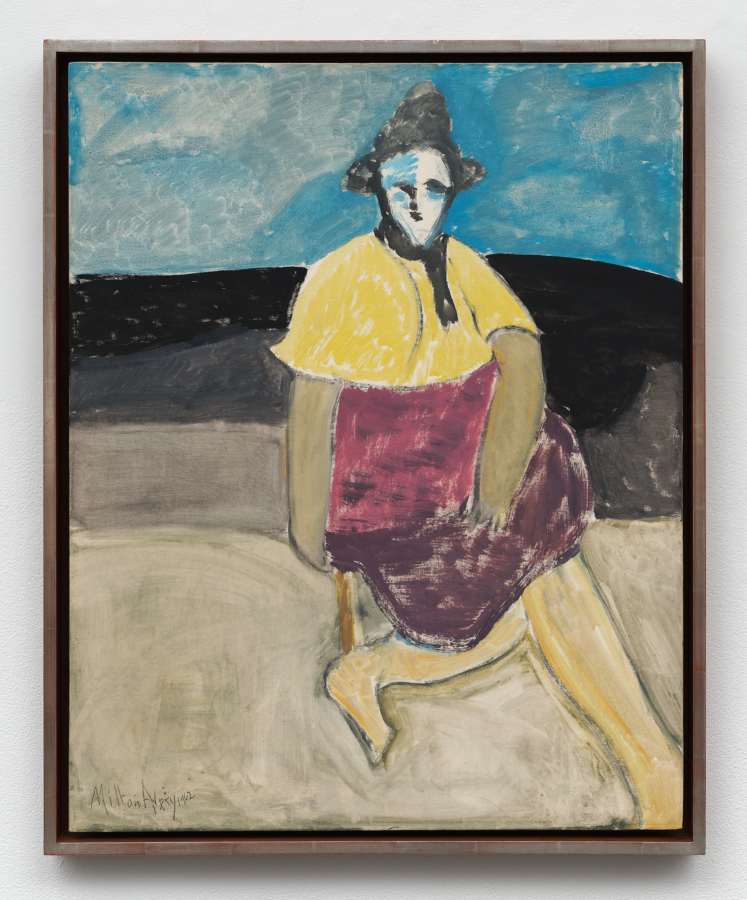Henni Alftan, Matt Hilvers, Ruth Ige, Andrew Sim
August 8–September 15, 2019
Opening reception: Thursday August 8, 2019, 6–9pm
188 E 2nd Street
New York, NY 10009
Henni Alftan, Matt Hilvers, Ruth Ige, Andrew Sim
August 8–September 15, 2019
Opening reception: Thursday August 8, 2019, 6–9pm
188 E 2nd Street
New York, NY 10009
Karma is pleased to present a group of four solo exhibitions by
Henni Alftan, Matt Hilvers, Ruth Ige and Andrew Sim.
Everyone, even the most unembodied person, experiences themselves as inextricably bound up with or in their body. In ordinary circumstances, to the extent that one feels one’s body to be alive, real, and substantial, one feels oneself alive, real, and substantial. Most people feel they began when their bodies began and that they will end when their bodies die. We could say that such a person experiences himself as embodied.
— R.D. Laing, The Divided Self, 1960
It was on a dreary night of November that I beheld the accomplishment of my toils. With an anxiety that almost amounted to agony, I collected the instruments of life around me, that I might infuse a spark of being into the lifeless thing that lay at my feet. It was already one in the morning; the rain pattered dismally against the panes, and my candle was nearly burnt out, when, by the glimmer of the half-extinguished light, I saw the dull yellow eye of the creature open; it breathed hard, and a convulsive motion agitated its limbs.
How can I describe my emotions at this catastrophe, or how delineate the wretch whom with such infinite pains and care I had endeavored to form? His limbs were in proportion, and I had selected his features as beautiful. Beautiful! Great God! His yellow skin scarcely covered the work of muscles and arteries beneath; his hair was of a lustrous black, and flowing; his teeth of a pearly whiteness; but these luxuriances only formed a more horrid contrast with his watery eyes, that seemed almost of the same color as the dun-white sockets in which they were set, his shriveled complexion and straight black lips.
The different accidents of life are not so changeable as the feelings of human nature.
— Mary Wollstonecraft Shelley, Frankenstein, 1818
What is the weird? When we say something is weird, what kind of feeling are we pointing to? I want to argue that the weird is a particular kind of perturbation. It involves a sensation of wrongness: a weird entity or object is so strange that it makes us feel that it should not exist, or at least it should not exist here. Yet if the entity or object is here, then the categories which we have up until now used to make sense of the world cannot be valid. The weird thing is not wrong, after all: it is our conceptions that must be inadequate.
Dictionary definitions are not always much help in defining the weird. Some refer immediately to the supernatural, but it is by no means clear that supernatural entities must be weird. In many ways, a natural phenomenon such as a black hole is more weird than a vampire. Certainly, when it comes to fiction, the very generic recognizability of creatures such as vampires and werewolves disqualifies them from provoking any sensation of weirdness. There is a pre-existing lore, a set of protocols for interpreting and placing the vampire and the werewolf. In any case, these creatures are merely empirically monstrous; their appearance recombines elements from the natural world as we already understand it.
— Mark Fisher, The Weird and The Eerie, 2016
Henni Alftan (b. 1979, Helsinki) lives and works in Paris.
Matt Hilvers (b. 1990, Chicago) lives and works in New York.
Ruth Ige (b. 1992, Nigeria) lives and works in Auckland.
Andrew Sim (b. 1987, Glasgow) lives and works in Glasgow.



